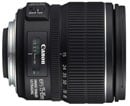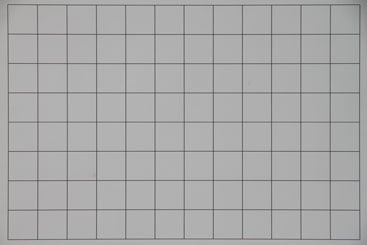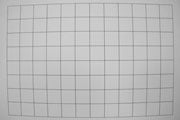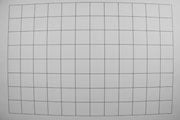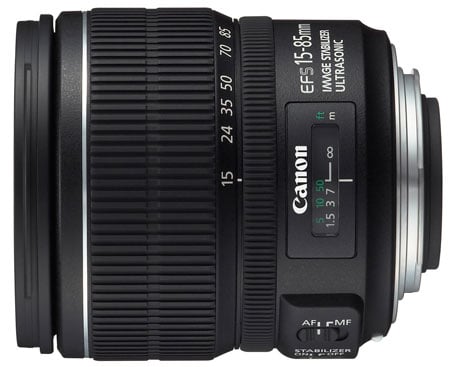
Canon EF-S 15-85mm f3.5-5.6 IS USM
-
-
Written by Gordon Laing
Quality
Canon EF-S 15-85mm IS USM design, build quality and focusing
The Canon EF-S 15-85mm IS is pictured below, second from the left, flanked by the standard EF-S 18-55mm IS kit lens on the far left and the EF-S 17-85mm IS to its right. On the far right is the EF-S 18-135mm IS. From the photo below, the EF-S 15-85mm IS appears roughly the same size as the EF-S 17-85mm IS, but looks can be deceptive as there are significant differences with both lenses in your hands.
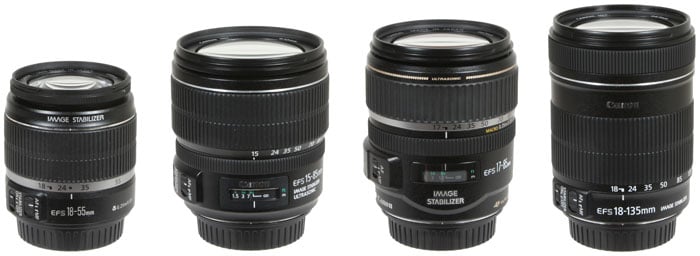 |
Measuring 82x88mm, the EF-S 15-85mm IS is a little shorter, but fatter than the 79x92mm of the EF-S 17-85mm. This may only make it 3mm wider and 4mm shorter, but if you’re used to the earlier model, the new one can look quite stubby in comparison, albeit in quite an appealing way like a larger aperture lens. The EF-S 18-135mm is unsurprisingly the longest here at 101mm, which coupled with its 75mm maximum diameter lends it a slimmer appearance to its pricier counterpart. All of course dwarf the standard kit lens which measures just 69x70mm.
The most noticeable difference in your hands though concerns the weight. At 575g, the EF-S 15-85mm IS weighs exactly 100g more than the EF-S 17-85mm IS and you really feel a difference when swapping between them on a lower-end body. Mount them on a higher-end model like the EOS 50D or EOS 7D though and the EF-S 15-85mm IS feels perfectly-balanced. The extra weight also lends it an air of confidence that’s lacking from some of the lighter EF-S lenses, although the EF-S 17-55mm f2.8 unsurprisingly remains the heaviest general-purpose zoom in the range at 645g thanks to its constant f2.8 aperture.
In the meantime, at 455g the EF-S 18-135mm IS is just a little lighter than the EF-S 17-85mm IS, and again all are much heavier than the 200g of the EF-S 18-55mm IS kit lens.
So if you’re upgrading from this kit lens to any of those pictured here, be prepared for a noticeable increase in size and weight. Interestingly the Canon EF-S 15-85mm IS is also larger and heavier than its equivalents from Nikon and Sony despite sharing the same aperture and almost identical ranges: the Nikkor DX 16-85mm VR weighs 485g and measures 72x85mm, while the Sony DT 16-80mm weighs 445g and measures 72x83mm, although to be fair the latter doesn’t have built-in stabilisation.
Interestingly while both the EF-S 15-85mm IS and its predecessor share the same maximum focal length, the new model physically extends much further when zoomed-in: by 40mm compared to 26mm, making it longer overall in this position. The EF-S 18-135mm IS extends by a similar 39mm, although with a single barrel rather than the twin-barrel design of the EF-S 15-85mm IS and EF-S 17-85mm IS.
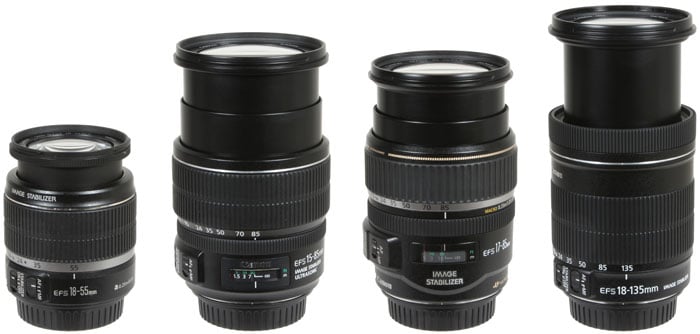 |
|
In terms of build-quality, the EF-S 15-85mm IS felt a little more solid than the EF-S 17-85mm IS, although much of that could simply be due to the age of the latter sample, not to mention the additional weight of the former. The manual focusing and wider zoom rings on the new model felt a little smoother and stiffer though, even taking wear into consideration.
Despite being a brand new sample with a relatively stiff zoom ring and short barrel extension, the EF-S 15-85mm IS is not immune to lens creep. When pointed directly up or down, our sample suffered from creep between 24 and 50mm where the barrel could gradually retract or extend under its own weight. It’s not as bad as some super-zoom lenses we’ve tested, but it’s certainly present.
Thankfully with the lens set to 15 (or 85mm) though, our sample avoided any creep, making a transport lock unnecessary. So unlike some of the worse-offenders, you won’t find the EF-S 15-85mm IS annoyingly extending by itself when mounted on a camera slung around your neck or carried in a bag.
Canon claims the EF-S 15-85mm IS features a ‘new exterior design, with a textured finish for a high quality look and feel, that matches your EOS camera’, and while it is a little less shiny and plasticky than some earlier models, it’s a pretty subtle difference as you can see from our photos above.
For all its improvements though, the EF-S 15-85mm IS remains a long shot from the build and mechanical quality of one of Canon’s L-series models. It may have a metal lens mount, but there’s no environmental sealing. The zoom and focusing rings may be smoother than earlier models, but both feel a world apart from the silky operation of those on L models. And continuing Canon’s misguided tradition, the L models remain the only lenses in the range to include a lens hood as standard.
It’s a real shame EF-S lenses continue to be excluded from the L-club, especially with higher-end bodies like the EOS 7D physically out-performing models like the EOS 5D Mark II. Is it really too much to ask for a general-purpose EF-S zoom for these higher-end bodies which matches the physical, environmental and mechanical quality of models like the EF 24-105mm IS?
| A quick note about using a popup flash with the EF-S 15-85mm IS. We tried it with the EOS 450D / XSi and EOS 7D bodies and found their built-in flashes managed to clear the lens barrel when zoomed-out, avoiding any shadows at distances above 50cm. Note the EOS 7D’s built-in flash features broader coverage to better match the wider coverage of this lens – evident in the samples here. |
Canon EF-S 15-85mm IS USM optical design
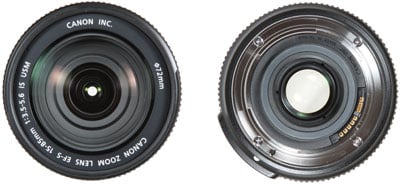 | |
Like the EF-S 17-85mm IS before it, the Canon EF-S 15-85mm IS employs 17 elements in 12 groups, and a closest focusing distance of 35cm. Both lenses share a focal ratio of f5.6 when zoomed-into 85mm, but the new model is a little brighter when zoomed-out: f3.5 at 15mm compared to f4 at 17mm on the older model.
The combination of a slightly brighter focal ratio and wider coverage is responsible for the larger elements at the front-end of the lens, not to mention its increased weight. As we’ll detail below, this also results in a wider filter thread.
The EF-S 15-85mm IS also features seven aperture blades to the six on its predecessor which should allow it to deliver more pleasing out-of-focus effects. You can see an example portrait shot with the aperture wide open in our Gallery.
According to data supplied by the lens, the maximum apertures operate within the following focal ranges: at f3.5 between 15 and 17mm, at f4.0 between 18 and 26mm, at f4.5 between 27 and 37mm, at f5.0 between 38 and 60mm, and finally at f5.6 between 61 and 85mm.
Canon EF-S 15-85mm IS USM focusing
Like the EF-S 17-85mm IS before it, you’ll find a narrow manual focusing ring alongside a window indicating focusing distance, although both have now been shifted closer to the mount-end of the lens.
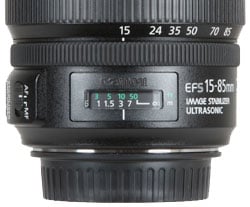 |
From the photos here, the manual focusing rings may look similar, but even taking wear into account, the one on the new model is stiffer and smoother which makes fine adjustments easier. As described above, it’s not in the L-class, but an improvement over existing EF-S lenses. Like other models with USM motors, it also offers full-time operation without having to switch the lens to MF first; sadly the EF-S 18-135mm IS and EF-S 18-200mm IS lack USM and need to be switched to MF for manual focusing.
Set to AF, the EF-S 15-85mm IS focuses fairly quickly and quietly, and was roughly similar to the EF-S 17-85mm IS in this respect. Don’t expect the lightening speed of some of Canon’s top-end telephotos, but it’s certainly quicker (and quieter) than non-USM general-purpose zooms like the EF-S 18-135mm IS and EF-S 18-200mm IS. As such, it generally takes less than a second to focus from a meter to infinity or back again, and is sufficiently quick to track most approaching or receding subjects.
As you’d expect, the barrel doesn’t rotate while focusing which is good news for users of polarising filters, although the actual filter mount itself is now bigger than the older model: 72mm compared to 67mm on the EF-S 17-85mm IS. For comparison, the EF-S 18-135mm IS and EF-S 18-200mm IS employ 67 and 72mm threads respectively.
Now let’s take a look at the coverage and stabilisation in our Canon EF-S 15-85mm IS features page.
Canon EF-S 15-85mm IS USM coverage and stabilisation
Canon’s EF-S 15-85mm IS is designed as a general-purpose lens for cropped-frame bodies delivering equivalent coverage of 24-136mm. To illustrate this range in practice we fitted the lens to an EOS 7D body, mounted it on a tripod and shot the same scene fully zoomed-out, then fully zoomed-in.
Canon EF-S 15-85mm IS USM coverage | ||
 |  | |
EF-S 15-85mm at 15mm (24mm equivalent) | EF-S 15-85mm at 85mm (136mm equivalent) | |
At the wide-end, 24mm captures a comfortably wider field-of-view than the typical 27 or 28mm of most kit lenses, allowing you to squeeze-in larger subjects and ideal for cramped interiors or situations when you can’t step back any further. It also allows for more dramatic perspective effects than 28mm lenses.
Three or four millimetres may not sound like much, but it makes a big difference in wide-angle terms, and this capability is the big selling point the EF-S 15-85mm IS has over its predecessor, the EF-S 17-85mm IS.
As you zoom the lens in, you’ll go through most of the classic focal lengths for portrait photography, and while the average aperture won’t deliver very shallow depth-of-field effects, it’s still possible to nicely blur the background – you can see an example in our gallery, and for technical advice on achieving this effect, see our Portrait Tutorial.
The maximum equivalent focal length of 136mm also allows you to grab detail shots or close-range action and wildlife, although if you’d like to enlarge distant subjects you’ll want something much longer.
To put the wide-angle coverage into perspective, we’ve pictured it below with red frames indicating the coverage you’d achieve with the older EF-S 17-85mm IS and EF-S 18-55mm IS lenses when also zoomed-out. These frames do not represent theoretical comparisons which have been generated mathematically. Instead they were generated by over-laying actual photos taken with each lens just moments apart, and scaling them in Photoshop until the details lined-up (taking geometric distortion into account). So the differences you see here really are what you’d experience in practice. Note, the actual coverage is indicated by the outside edge of the frame.
Canon EF-S 15-85mm IS USM wide-angle coverage comparison | ||
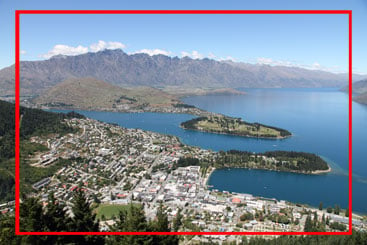 | 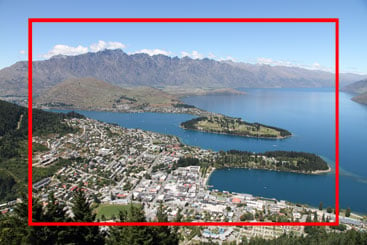 | |
EF-S 15-85mm at 15mm (24mm equivalent) Red frame represents actual coverage of EF-S 17-85mm at 17mm | EF-S 15-85mm at 15mm (24mm equivalent) Red frame represents actual coverage of EF-S 18-55mm at 18mm | |
The frames clearly indicate the wide-angle benefit of the EF-S 15-85mm IS over the other two lenses. It’s comfortably wider than its predecessor and much more so than the standard kit lens. Again a few millimetres may not sound liek much written down, but can make a world of difference in reality.
We performed the same comparison against the older EF-S 17-85mm IS with both lenses zoomed-in, and despite sharing the same maximum focal length in their specifications, the newer EF-S 15-85mm IS actually captured a fractionally tighter field of view. This is a very minor difference though, mentioned here only as a matter of interest. When shrunk to the size shown on this page the difference essentially becomes imperceptible.
Canon EF-S 15-85mm IS USM Stabilisation
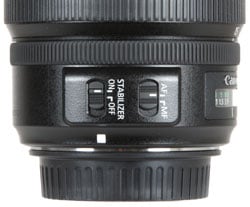 |
The Canon EF-S 15-85mm IS is equipped with Image Stabilisation capabilities to counteract camera shake. Like all of Canon’s IS lenses to date, this employs an optical system which means you see the stabilising effect while composing through the optical viewfinder. Seeing the image suddenly steady itself when you half-press the shutter release button is very reassuring, especially when you’re shooting at longer focal lengths.
IS is enabled by flicking a switch on the side of the lens barrel. Canon claims the lens has four stops of compensation and automatically detects panning to temporarily deactivate one axis. In operation, the IS motor is very quiet.
To put its effectiveness to the test we took a series of photos with it zoomed-into an equivalent of 136mm, where traditional photographic advice would recommend a shutter speed of at least 1/136 to eliminate camera shake.
Our sequence started at 1/125 and reduced by one stop each time until 1/8. We performed this sequence twice, first without IS enabled, and secondly with IS enabled. Below are 100% crops taken from the non-IS and IS images at a shutter speed of 1/15.
Canon EF-S 15-85mm IS USM Image Stabilisation | ||
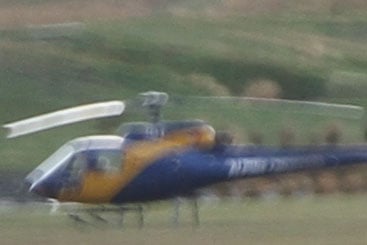 | 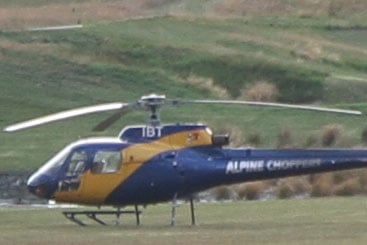 | |
EF-S 15-85mm at 85mm (136mm equivalent) IS off, 1/15 | EF-S 15-85mm at 85mm (136mm equivalent) IS on, 1/15 | |
On the conditions of the day, the fastest we could handhold a sharp result when fully zoomed-in without any stabilisation was at 1/60; anything slower suffered from camera shake. With IS enabled, we could match the sharpness under the same conditions at a shutter speed of 1/15. You can see examples taken at 1/15 with and without stabilisation above, and it’s clear how the version with IS is much steadier.
This corresponds to two stops in practice over our 1/60 shot, or approximately three stops over conventional wisdom at 1/136. This falls short of the four stops claimed by Canon, and indeed when repeating stabilisation tests under different conditions we still found the lens failing to deliver much more than two stops in practice.
While two stops is still a valuable facility to have at your disposal, it’s a little disappointing compared to the three or four stops we’ve measured in practice with other systems. When framing with IS enabled, the view also appeared to wobble from time to time more than expected, perhaps suggesting a fault with our model or the automatic mechanism which disables one or both axes of stabilisation when panning or mounted on a tripod. Indeed the eerily quiet IS motor on this lens made us wonder at times if it was enabled at all, but listening very closely confirmed it whirring very faintly in the background.
We were surprised by the modest results here, as earlier Canon stabilisation systems always proved very effective in our tests. Supplies of this lens were limited in our region at the time of writing, but we hope to retest the IS capability on other models in the future. In the meantime, if you own this lens, we’d be interested to hear your personal experiences in the Camera Labs forum.
Now it’s time to see how the lens performs against alternative general purpose zooms in our Canon EF-S 15-85mm IS results pages.
Real-life sharpness when zoomed-out – Canon EF-S 15-85mm IS vs EF-S 17-85mm IS vs EF-S 18-135mm IS
Canon EF-S 15-85mm IS USM results : Sharpness 15mm / Sharpness 50mm / Sharpness 85mm / Geometry / Vignetting
Corner sharpness with all lenses zoomed-out |
Canon EF-S 15-85mm IS USM Corner sharpness at 15mm | Canon EF-S 17-85mm IS USM Corner sharpness at 17mm | Canon EF-S 18-135mm IS Corner sharpness at 18mm | ||
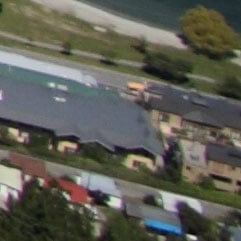 |  | 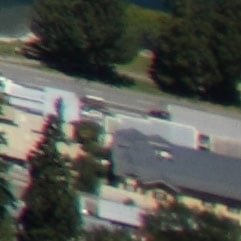 | ||
f3.5, 100 ISO | f3.5 not available | f3.5, 100 ISO | ||
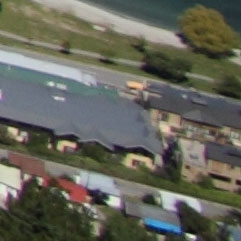 | 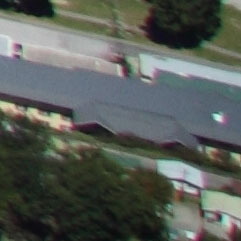 | 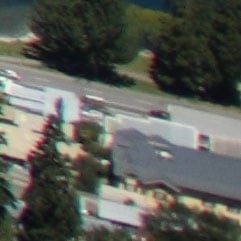 | ||
f4, 100 ISO | f4, 100 ISO | f4, 100 ISO | ||
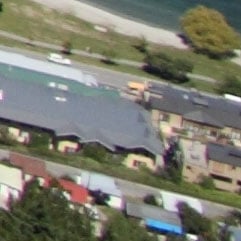 | 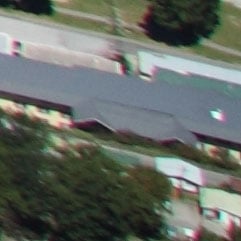 | 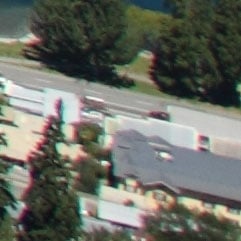 | ||
f5.6, 100 ISO | f5.6, 100 ISO | f5.6, 100 ISO | ||
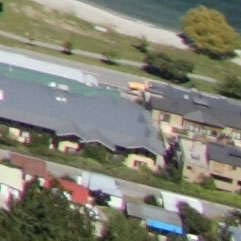 | 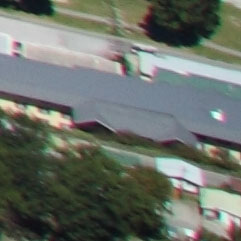 |  | ||
f8, 100 ISO | f8, 100 ISO | f8, 100 ISO |
Centre sharpness with all lenses zoomed-out |
| The optical superiority of the EF-S 15-85mm IS USM when zoomed-out is repeated in the centre of the frame. At f3.5, it’s noticeably crisper than the EF-S 18-135mm IS and contains more detail despite the wider focal length capturing a larger area for comparison. |
Closing the aperture slightly to f4 sees a small improvement in sharpness on both lenses, and it’s at this point the EF-S 17-85mm IS joins in, albeit looking softer and less contrasty than the other two.
All three lenses improve in sharpness and contrast at f5.6, and this is arguably the sweetspot for the EF-S 15-85mm IS USM centre performance when zoomed-out. That said, the corner performance above looked a little better at f8, so it’s a case of finding a balance in-between these two values or adjusting, depending on the subject matter.
Either way, the EF-S 15-85mm IS USM delivers excellent performance across the frame when fully zoomed-out and is a significant improvement over the older EF-S 17-85mm IS USM in this respect. But again this page only compares the lenses at their widest focal lengths and the story changes as you zoom-in. So check out our corner and centre results at 50mm, or first have a browse below at how the EF-S 15-85mm IS USM and EF-S 18-135mm IS compare against the EF-S 18-55mm IS kit lens.
Canon EF-S 15-85mm IS USM Centre sharpness at 15mm | Canon EF-S 17-85mm IS USM Centre sharpness at 17mm | Canon EF-S 18-135mm IS Centre sharpness at 18mm | ||
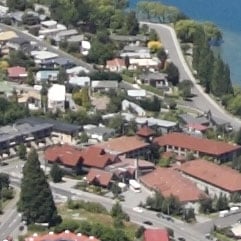 |  | 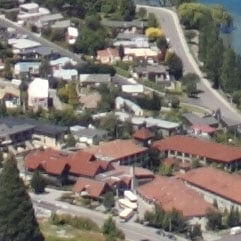 | ||
f3.5, 100 ISO | f3.5 not available | f3.5, 100 ISO | ||
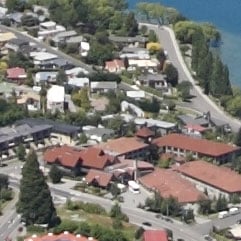 | 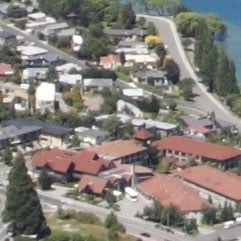 | 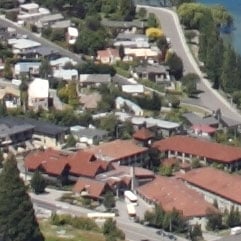 | ||
f4, 100 ISO | f4, 100 ISO | f4, 100 ISO | ||
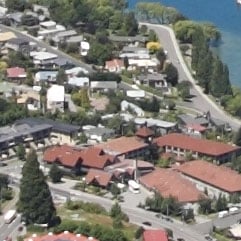 | 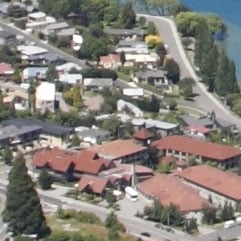 | 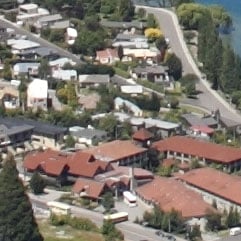 | ||
f5.6, 100 ISO | f5.6, 100 ISO | f5.6, 100 ISO | ||
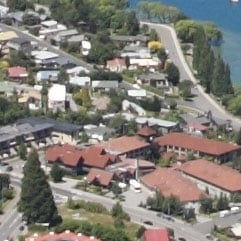 | 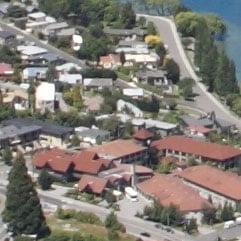 | 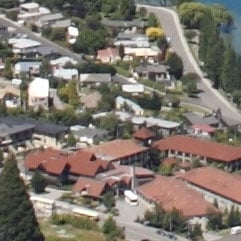 | ||
f8, 100 ISO | f8, 100 ISO | f8, 100 ISO |
Real-life sharpness when zoomed-out – Canon EF-S 15-85mm IS vs EF-S 18-55mm IS vs EF-S 18-135mm IS |
|
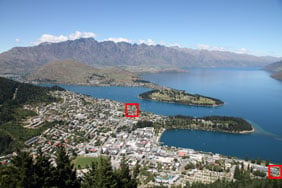 | To compare real-life sharpness when zoomed-out, we shot this scene with the Canon EF-S 15-85mm IS, EF-S 18-55mm IS and EF-S 18-135mm IS, using an EOS 7D body at all apertures. |
The 7D was set to RAW to avoid in-camera JPEG corrections; all files were processed in Canon DPP with lens corrections disabled and the default sharpness of 3. IS was disabled on each lens, and magnified assistance in Live View used to confirm the focusing.
The image above was taken with the Canon EF-S 15-85mm IS USM mounted on a Canon EOS 7D body. The lens was set to 15mm f8, and the 7D to 100 ISO. In the samples below, the exposures were identical with each lens and the crops taken from the areas marked with the red squares for presentation here at 100%.
The first table compares crops taken from the corner of each image at different aperture settings and the second table compares crops taken from the centres of the same images.
While we matched the coverage as closely as possible for our tests at 50 and 85mm, we decided to test each lens on this page when fully zoomed-out. As such, each captured a slightly different field-of-view at their widest focal lengths of 15 and 18mm. This poses an issue when it comes to choosing an area to crop from the corner, as subjects close to the edges of the 18mm sample will be comfortably further-in on the wider lens, giving it an unfair advantage. As such we have taken our corner crops below from an area pressed up against the far right edge of each frame, and very close to the bottom.
The areas may not show the same subject area as a consequence, but they do allow us to compare overall sharpness and correction from the same portion of the frame. Below this table you’ll see crops taken from close to the centre of each image and again the variations in focal length have resulted in slightly different areas being captured.
Zoomed-out, the EF-S 18-55mm IS kit lens suffers from softness and coloured fringing in the corners at all apertures tested, although it does improve slowly towards f8. The EF-S 18-135mm IS enjoys a step-up in sharpness in the corners over the kit lens, but again it’s the EF-S 15-85mm IS USM which features the best performance of all here – as you’d hope considering its much higher price.
The EF-S 18-55mm IS kit lens does however redeem itself in the centre, delivering a respectably sharp result even with the aperture wide open – indeed it looks a little better than the EF-S 18-135mm IS at f3.5. As the apertures close down, there’s little to tell the EF-S 18-55mm IS and EF-S 18-135mm IS apart, although again the EF-S 15-85mm IS USM enjoys a small edge in overall crispness.
Now check out how the four lenses tested here compare at a mid focal length of 50mm.
Corner sharpness with all lenses zoomed-out |
Canon EF-S 15-85mm IS USM Corner sharpness at 15mm | Canon EF-S 18-55mm IS Corner sharpness at 18mm | Canon EF-S 18-135mm IS Corner sharpness at 18mm | ||
 | 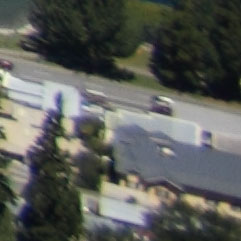 |  | ||
f3.5, 100 ISO | f3.5, 100 ISO | f3.5, 100 ISO | ||
 | 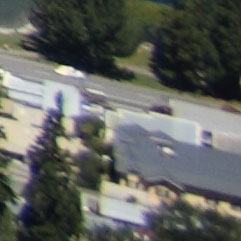 |  | ||
f4, 100 ISO | f4, 100 ISO | f4, 100 ISO | ||
 | 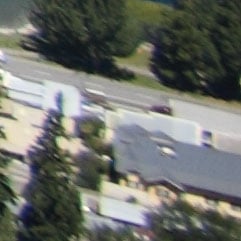 |  | ||
f5.6, 100 ISO | f5.6, 100 ISO | f5.6, 100 ISO | ||
 | 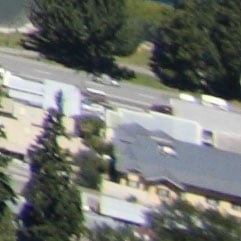 |  | ||
f8, 100 ISO | f8, 100 ISO | f8, 100 ISO |
Centre sharpness with all lenses zoomed-out |
Canon EF-S 15-85mm IS USM Centre sharpness at 15mm | Canon EF-S 18-55mm IS Centre sharpness at 18mm | Canon EF-S 18-135mm IS Centre sharpness at 18mm | ||
 | 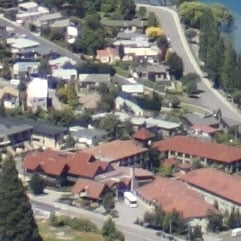 |  | ||
f3.5, 100 ISO | f3.5, 100 ISO | f3.5, 100 ISO | ||
 | 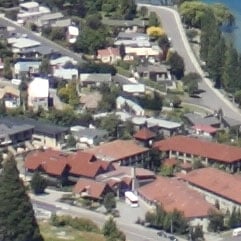 |  | ||
f4, 100 ISO | f4, 100 ISO | f4, 100 ISO | ||
 | 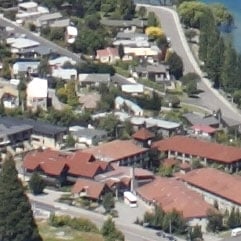 |  | ||
f5.6, 100 ISO | f5.6, 100 ISO | f5.6, 100 ISO | ||
 | 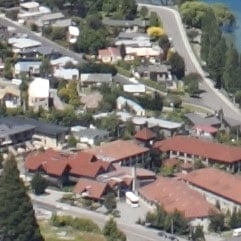 |  | ||
f8, 100 ISO | f8, 100 ISO | f8, 100 ISO |
| Now let’s see how the four lenses compare when all are adjusted to the same mid-range focal length of 50mm. |
Canon EF-S 15-85mm IS USM results : Sharpness 15mm / Sharpness 50mm / Sharpness 85mm / Geometry / Vignetting
|
 | To compare real-life sharpness when zoomed-out, we shot this scene with the Canon EF-S 15-85mm IS, EF-S 17-85mm IS and EF-S 18-135mm IS, using an EOS 7D body at all apertures. |
The 7D was set to RAW to avoid in-camera JPEG corrections; all files were processed in Canon DPP with lens corrections disabled and the default sharpness of 3. IS was disabled on each lens, and magnified assistance in Live View used to confirm the focusing.
The image above was taken with the Canon EF-S 15-85mm IS USM mounted on a Canon EOS 7D body. The lens was set to 15mm f8, and the 7D to 100 ISO. In the samples below, the exposures were identical with each lens and the crops taken from the areas marked with the red squares for presentation here at 100%.
The first table compares crops taken from the corner of each image at different aperture settings and the second table compares crops taken from the centres of the same images. Below these you’ll find two further tables which switch the results from the EF-S 17-85mm IS USM for those from the EF-S 18-55mm IS kit lens for those thinking of upgrading.
While we matched the coverage as closely as possible for our tests at 50 and 85mm, we decided to test each lens on this page when fully zoomed-out. As such, each captured a slightly different field-of-view at their widest focal lengths of 15, 17 and 18mm. This poses an issue when it comes to choosing an area to crop from the corner, as subjects close to the edges of the 18mm sample will be comfortably further-in on the wider lenses, giving them an unfair advantage. As such we have taken our corner crops below from an area pressed up against the far right edge of each frame, and very close to the bottom.
The areas may not show the same subject area as a consequence, but they do allow us to compare overall sharpness and correction from the same portion of the frame. Below this table you’ll see crops taken from close to the centre of each image and again the variations in focal length have resulted in slightly different areas being captured.
The unique selling point of the EF-S 15-85mm IS USM is its wide angle coverage and the lens certainly doesn’t disappoint when fully zoomed-out. Even with lens corrections disabled there’s minimal coloured fringing to worry about and most impressively of all, details remain respectably sharp right up to the corners, even with large apertures. The latter is very important as while fringing, vignetting and geometric distortion can all be corrected fairly effectively in software, there’s little you can do about a frame which becomes softer towards the edges.
At f3.5, the EF-S 15-85mm IS USM delivers a noticeably sharper result in the corners than the EF-S 18-135mm IS, and again avoids the obvious fringing on the cheaper model. At f4, both lenses have become fractionally sharper, although the EF-S 15-85mm IS USM remains comfortably superior in the corners. At f4 we can also now compare the EF-S 15-85mm IS USM against its predecessor the EF-S 17-85mm IS USM. Unlike its successor, the EF-S 17-85mm IS USM suffers when fully zoomed-out with noticeable softening in the corners and significantly worse coloured fringing. So of the three lenses here, the EF-S 15-85mm IS USM is taking a comfortable lead.
At f5.6 all three lenses have lost most of the darkening effect due to vignetting and both the EF-S 15-85mm IS USM and the EF-S 18-135mm IS enjoy sharper details, although the latter still suffers from obvious coloured fringing. Sadly despite a reduction in vignetting, the EF-S 17-85mm IS USM f5.6 corner sample hasn’t become significantly improved in other respects.
The story continues at f8 with gradually sharper results from the EF-S 15-85mm IS USM and EF-S 18-135mm IS, albeit again with more obvious coloured fringing on the latter, while the EF-S 17-85mm IS USM remains relatively soft in the corners.
When viewing the entire frames, this story becomes more obvious with the EF-S 15-85mm IS USM taking a comfortable lead in corner performance over the other two models when all three are zoomed-out. It’s a great start for the new lens, but be sure to check our results at other focal lengths as it’s not necessarily a slam-dunk across the entire range. Before leaving this page though, scroll down to the second table to see results taken from the centre of each frame, followed by a set of results comparing the new zooms against the EF-S 18-55mm IS kit lens.
Real-life sharpness at 50mm – Canon EF-S 15-85mm IS vs EF-S 17-85mm IS vs EF-S 18-135mm IS
Canon EF-S 15-85mm IS USM results : Sharpness 15mm / Sharpness 50mm / Sharpness 85mm / Geometry / Vignetting
Corner sharpness with all lenses at 50mm |
Canon EF-S 15-85mm IS USM Corner sharpness at 50mm | Canon EF-S 17-85mm IS USM Corner sharpness at 50mm | Canon EF-S 18-135mm IS Corner sharpness at 50mm | ||
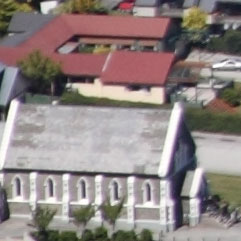 |  | 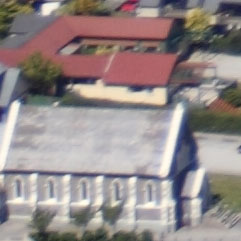 | ||
f5, 100 ISO | f5 not available | f5, 100 ISO | ||
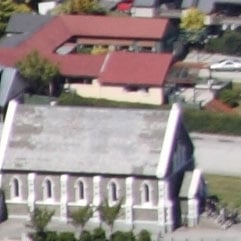 | 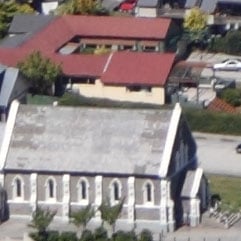 | 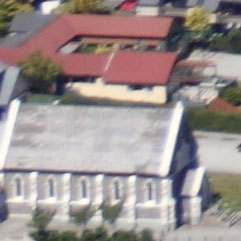 | ||
f5.6, 100 ISO | f5.6, 100 ISO | f5.6, 100 ISO | ||
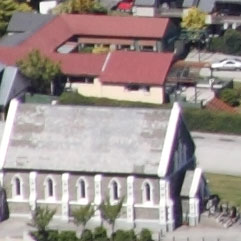 | 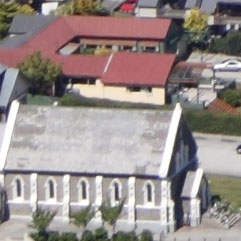 | 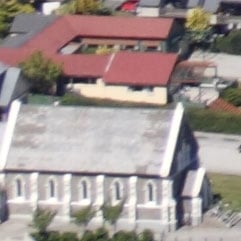 | ||
f8, 100 ISO | f8, 100 ISO | f8, 100 ISO |
Centre sharpness with all lenses at 50mm |
| While there are significant differences in the corner performance of all three lenses when zoomed-into a mid focal length of 50mm, they essentially become identical towards the middle of the frame. Pixel-peepers may notice minor differences in sharpness and contrast between the three models and various aperture settings below, but to all intents and purposes, they’re the same. |
Scroll down to see how the EF-S 18-55mm IS kit lens measures-up at 50mm, or if you’ve already seen enough, head on over to our results at 85mm.
Canon EF-S 15-85mm IS USM Centre sharpness at 50mm | Canon EF-S 17-85mm IS USM Centre sharpness at 50mm | Canon EF-S 18-135mm IS Centre sharpness at 50mm | ||
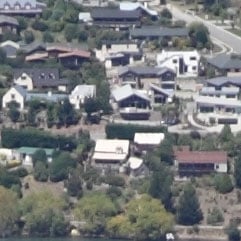 |  | 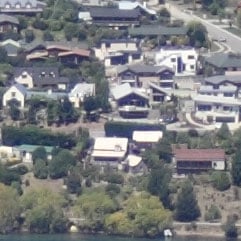 | ||
f5, 100 ISO | f5 not available | f5, 100 ISO | ||
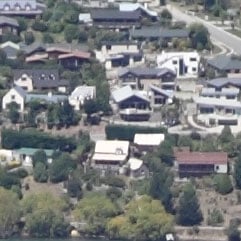 | 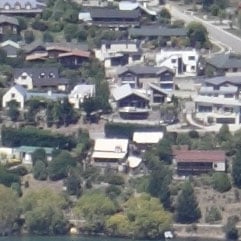 | 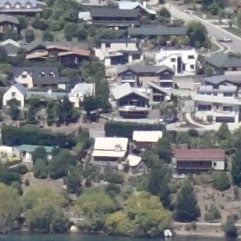 | ||
f5.6, 100 ISO | f5.6, 100 ISO | f5.6, 100 ISO | ||
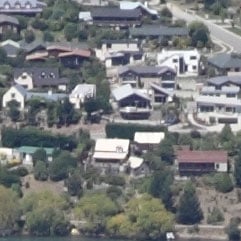 | 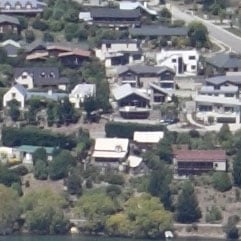 | 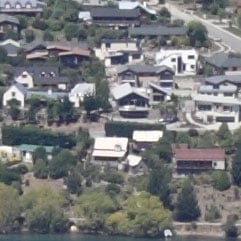 | ||
f8, 100 ISO | f8, 100 ISO | f8, 100 ISO |
Real-life sharpness at 50mm – Canon EF-S 15-85mm IS vs EF-S 18-55mm IS vs EF-S 18-135mm IS |
|
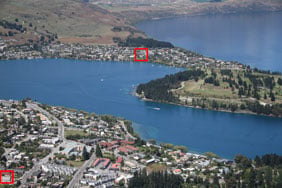 | To compare real-life sharpness at a mid focal length of 50mm, we shot this scene with the Canon EF-S 15-85mm IS, EF-S 18-55mm IS and EF-S 18-135mm IS, using an EOS 7D body at all apertures. |
The 7D was set to RAW to avoid in-camera JPEG corrections; all files were processed in Canon DPP with lens corrections disabled and the default sharpness of 3. IS was disabled on each lens, and magnified assistance in Live View used to confirm the focusing.
The image above was taken with the Canon EF-S 15-85mm IS USM mounted on a Canon EOS 7D body. The lens was set to 50mm f8, and the 7D to 100 ISO. In the samples below, the exposures were identical with each lens and the crops taken from the areas marked with the red squares for presentation here at 100%.
The first table compares crops taken from the corner of each image at different aperture settings and the second table compares crops taken from the centres of the same images.
As before, the sequence starts with the EF-S 15-85mm IS USM and EF-S 18-135mm IS, this time both offering a maximum aperture of f5.0 at 50mm. Once again the pricier EF-S 15-85mm IS USM enjoys a noticeably superior result with the aperture wide open.
With the apertures closed to f5.6, the EF-S 18-55mm IS kit lens can join-in, and while it unsurprisingly doesn’t match the outstanding result from the EF-S 17-85mm IS USM above, it does manage to visibly out-perform the EF-S 18-135mm IS.
At f8, the gap has narrowed considerably between the EF-S 18-55mm IS and EF-S 18-135mm IS, although the EF-S 15-85mm IS remains comfortably in the lead of this particular threesome. This marks the end of our comparisons with the EF-S 18-55mm IS, but check out our next results page to see how the main three lenses measure-up at a short telephoto focal length of 85mm.
Corner sharpness with all lenses at 50mm |
Canon EF-S 15-85mm IS USM Corner sharpness at 50mm | Canon EF-S 18-55mm IS Corner sharpness at 50mm | Canon EF-S 18-135mm IS Corner sharpness at 50mm | ||
 |  |  | ||
f5, 100 ISO | f5 not available | f5, 100 ISO | ||
 |  |  | ||
f5.6, 100 ISO | f5.6, 100 ISO | f5.6, 100 ISO | ||
 | 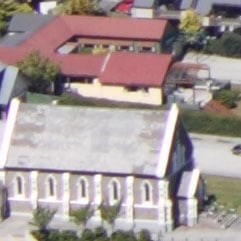 |  | ||
f8, 100 ISO | f8, 100 ISO | f8, 100 ISO |
Centre sharpness with all lenses at 50mm |
Canon EF-S 15-85mm IS USM Centre sharpness at 50mm | Canon EF-S 18-55mm IS Centre sharpness at 50mm | Canon EF-S 18-135mm IS Centre sharpness at 50mm | ||
 |  |  | ||
f5, 100 ISO | f5 not available | f5, 100 ISO | ||
 | 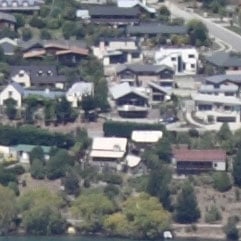 |  | ||
f5.6, 100 ISO | f5.6, 100 ISO | f5.6, 100 ISO | ||
 | 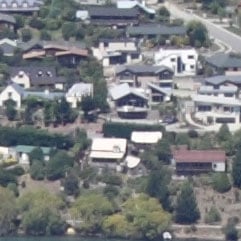 |  | ||
f8, 100 ISO | f8, 100 ISO | f8, 100 ISO |
| Now let’s see how the main three lenses compare when all are adjusted to the same short-telephoto focal length of 85mm. |
Canon EF-S 15-85mm IS USM results : Sharpness 15mm / Sharpness 50mm / Sharpness 85mm / Geometry / Vignetting
|
 | To compare real-life sharpness at a mid focal length of 50mm, we shot this scene with the Canon EF-S 15-85mm IS, EF-S 17-85mm IS and EF-S 18-135mm IS, using an EOS 7D body at all apertures. |
The 7D was set to RAW to avoid in-camera JPEG corrections; all files were processed in Canon DPP with lens corrections disabled and the default sharpness of 3. IS was disabled on each lens, and magnified assistance in Live View used to confirm the focusing.
The image above was taken with the Canon EF-S 15-85mm IS USM mounted on a Canon EOS 7D body. The lens was set to 50mm f8, and the 7D to 100 ISO. In the samples below, the exposures were identical with each lens and the crops taken from the areas marked with the red squares for presentation here at 100%.
The first table compares crops taken from the corner of each image at different aperture settings and the second table compares crops taken from the centres of the same images. Below these you’ll find two further tables which switch the results from the EF-S 17-85mm IS USM for those from the EF-S 18-55mm IS kit lens for those thinking of upgrading.
As before, the sequence starts with the EF-S 15-85mm IS USM and EF-S 18-135mm IS, this time both offering a maximum aperture of f5.0 at 50mm. It doesn’t take a pixel-peeper to see the EF-S 15-85mm IS USM delivering a much sharper result in the corner, but the big surprise comes at f5.6 when the EF-S 17-85mm IS USM comes in.
While the EF-S 15-85mm IS USM remains comfortably sharper than the EF-S 18-135mm IS at f5.6, the older EF-S 17-85mm IS USM is sharper still, delivering a very impressive result at 50mm with its aperture wide open.
With the apertures closed to f8, the EF-S 15-85mm IS USM manages to essentially match the corner sharpness of the EF-S 17-85mm IS USM, although both remain comfortably ahead of the EF-S 18-135mm IS. The latter has at least improved as the aperture closed down, but the other two models remain superior in corner sharpness at a mid-range focal length 50mm. The really impressive result comes from the EF-S 17-85mm IS USM this time at f5.6, although again close it and the EF-S 15-85mm IS USM down to f8 and both come pretty close.
Scroll down to see how the three lenses compare in the centre of the frames, or lower still to see how the EF-S 18-55mm IS kit lens measures-up at this focal length. Or if you’ve already seen enough, head on over to our results at 85mm.
Real-life sharpness at 85mm – Canon EF-S 15-85mm IS vs EF-S 17-85mm IS vs EF-S 18-135mm IS
Canon EF-S 15-85mm IS USM results : Sharpness 15mm / Sharpness 50mm / Sharpness 85mm / Geometry / Vignetting
Corner sharpness with all lenses at 85mm |
Canon EF-S 15-85mm IS USM Corner sharpness at 85mm | Canon EF-S 17-85mm IS USM Corner sharpness at 85mm | Canon EF-S 18-135mm IS Corner sharpness at 85mm | ||
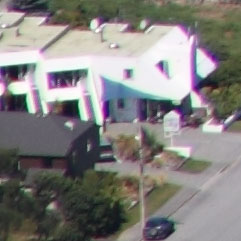 | 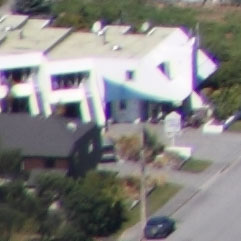 | 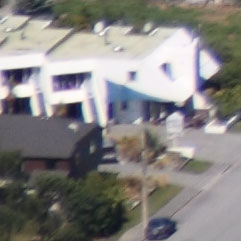 | ||
f5.6, 100 ISO | f5.6, 100 ISO | f5.6, 100 ISO | ||
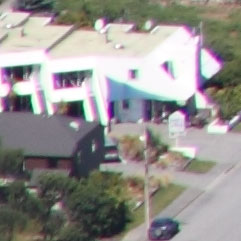 | 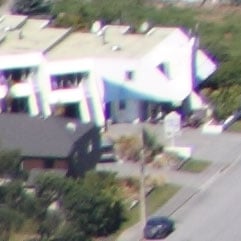 | 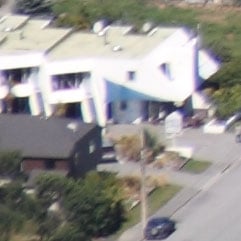 | ||
f8, 100 ISO | f8, 100 ISO | f8, 100 ISO |
Centre sharpness with all lenses at 85mm |
| The crops taken from the centre of each image at 85mm are much closer in quality and thankfully avoid the fringing and softness in the corners, although a quick glance reveals the EF-S 15-85mm IS USM to be crisper at f5.6, with the EF-S 18-135mm IS coming in third place. |
Close the aperture to f8 on all three models and their centre performance at 85mm becomes essentially identical. Revealingly this has been a recurring theme throughout these tests where the EF-S 18-135mm IS frequently needs to be closed to f8 to perform at its best, leaving the premium models to fight it out for the number one position at larger apertures.
Now see how the lenses compare in terms of geometric distortion and vignetting, or if you’ve seen enough, head straight to our verdict.
Canon EF-S 15-85mm IS USM Centre sharpness at 85mm | Canon EF-S 17-85mm IS USM Centre sharpness at 85mm | Canon EF-S 18-135mm IS Centre sharpness at 85mm | ||
 | 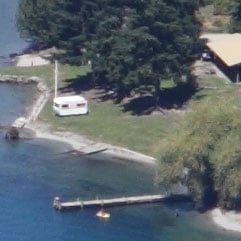 |  | ||
f5.6, 100 ISO | f5.6, 100 ISO | f5.6, 100 ISO | ||
 |  |  | ||
f8, 100 ISO | f8, 100 ISO | f8, 100 ISO |
| PS – Look out for our upcoming review of the EF-S 18-135mm IS lens which includes real-life sharpness results at its longest focal length of 135mm. |
Canon EF-S 15-85mm IS USM results : Sharpness 15mm / Sharpness 50mm / Sharpness 85mm / Geometry / Vignetting
|
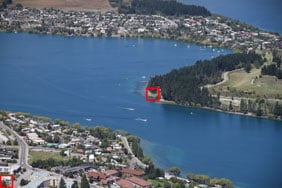 | To compare sharpness at a short-telephoto focal length of 85mm, we shot this scene with the Canon EF-S 15-85mm IS, EF-S 17-85mm IS and EF-S 18-135mm IS, using an EOS 7D body at all apertures. |
The 7D was set to RAW to avoid in-camera JPEG corrections; all files were processed in Canon DPP with lens corrections disabled and the default sharpness of 3. IS was disabled on each lens, and magnified assistance in Live View used to confirm the focusing.
The image above was taken with the Canon EF-S 15-85mm IS USM mounted on a Canon EOS 7D body. The lens was set to 85mm f8, and the 7D to 100 ISO. In the samples below, the exposures were identical with each lens and the crops taken from the areas marked with the red squares for presentation here at 100%.
The first table compares crops taken from the corner of each image at different aperture settings and the second table compares crops taken from the centres of the same images.
At f5.6, both the EF-S 15-85mm IS USM and EF-S 17-85mm IS USM are suffering from coloured fringing, which the EF-S 18-135mm IS manages to mostly avoid. The same situation applies at f8, albeit with a slight reduction in fringing and vignetting.
Look beyond the fringing on the first two lenses though and you’ll notice the EF-S 15-85mm IS USM recording sharper details in this corner area of the frame. You’ll see most obviously in the window frames, telegraph pole, parked car, foliage and hotel sign, but once you start looking, the differences become obvious throughout the entire crop. The EF-S 15-85mm IS USM is simply sharper in the corners when zoomed-in than either of the other two lenses tested here, and while the EF-S 18-135mm IS manages to avoid much of the coloured fringing of the other two, it’s arguably the softest of all.
It’s an important difference too, as coloured fringing can be effectively reduced through software, and Canon’s own DPP did a great job at cleaning-up RAW versions of these images. Remove (or at least greatly reduce) the fringing across all three samples and the superior sharpness of the EF-S 15-85mm IS USM becomes really apparent. Scroll down to see results from the centre of the frame.
Canon EF-S 15-85mm IS USM Geometric distortion
Canon EF-S 15-85mm IS USM results : Sharpness 15mm / Sharpness 50mm / Sharpness 85mm / Geometry / Vignetting
To measure the Canon EF-S 15-85mm IS USM’s geometric distortion, we photographed a chart consisting of a grid pattern with the lens set to its shortest and longest focal lengths at an aperture of f8. The images were shot in RAW mode to avoid any in-camera corrections, then analysed with Imatest using 5th Order line calculation, and the full areas presented here at a reduced resolution. Smaller percentages are better. Results for other general-purpose lenses are shown at the bottom of this page; note the results for the EF-S 18-55mm here are for the older non-IS version.
With the Canon EF-S 15-85mm IS USM zoomed-out to 15mm, barrel distortion was measured at 4.65%. Looking at the image above left, the wide-angle distortion looks quite significant, but it’s important to put it into context by comparing it with the results for other general purpose lenses below. Its predecessor, the EF-S 17-85mm IS USM scored 5.71%, while the EF-S 18-200mm IS super-zoom weighed-in with a considerable 6%. The EF-S 18-135mm IS fared better with 5.24%, but that still ranks all three as having noticeably worse geometric distortion when zoomed-out – and remember not only is the EF-S 15-85mm IS USM delivering less distortion than these other general-purpose lenses, but it’s doing it with a wider focal length too. Note the EF-S 18-55mm kit lens performed best of all with just 3.35%, but it also has the shortest overall range. With the EF-S 15-85mm IS USM zoomed-into 85mm, pincushion distortion was measured at 0.545%, which is almost twice as good as its predecessor, the EF-S 17-85mm IS USM, at the same focal length. The EF-S 18-200mm IS performed worst of all in this regard with a considerable 1.2% distortion when fully zoomed-in, but this was at 200mm and it’s not an unusual result for a lens with this kind of super-zoom range. The EF-S 18-135mm IS also suffers from quite noticeable distortion of 1.19% when zoomed-into 135mm. Once again, the short range of the EF-S 18-55mm allows it to enjoy respectably minor distortion, although at 0.389% when zoomed-in, the EF-S 15-85mm IS USM isn’t far behind. So while distortion may be visible in the samples from the EF-S 15-85mm IS USM above, it’s measurably and visibly superior to many other Canon general-purpose lenses. We’re not surprised to find the EF-S 18-200mm IS suffering the worst with its super-zoom range, nor the EF-S 18-135mm IS with its fairly long range and low price, but the really revealing comparison is with the older EF-S 17-85mm IS USM. The newer EF-S 15-85mm IS USM boasts lower distortion than its predecessor when zoomed-in or out, and the latter is particularly impressive given the wider coverage. For the record, the EF-S 15-85mm IS USM also performs fairly well in terms of geometric distortion when compared to equivalent models for rival systems: the Nikkor DX 16-85mm VR scored 5.32% and 0.907%, the Sony DT 16-80mm scored 4.04% and 0.52% and the Olympus ZD 12-60mm scored 2.31% and 0.45%. Now let’s see how the lenses compare in terms of light fall-off in the corners in our Canon EF-S 15-85mm IS USM vignetting results. Canon EF-S 15-85mm IS USM Geometric distortion compared to other lenses
| |||||||||||||||||||||||||||||||||||||||||||||||||||
Canon EF-S 15-85mm IS USM Vignetting / Light fall-off
Canon EF-S 15-85mm IS USM results : Sharpness 15mm / Sharpness 50mm / Sharpness 85mm / Geometry / Vignetting
To measure the Canon EF-S 15-85mm IS USM’s vignetting and light fall-off we photographed a white target with a highly diffused filter. The lens was manually focused to infinity and tested at its shortest and longest focal lengths with its aperture wide open. The images were shot in RAW mode to avoid any in-camera corrections, then analysed with Imatest and the full areas presented here at a reduced resolution. This time, bigger percentages are better. Results for other general-purpose lenses are shown at the bottom of this page; note the results for the EF-S 18-55mm here are for the older non-IS version.
Zoomed-out to 15mm and with its aperture wide open, light falls-off in the corners of the frame to 42.1% of the centre measurement. Measurably worse than most of the Canon general-purpose zooms, vignetting at wide-angle is the Achilles’ heel of the EF-S 15-85mm IS USM. Disappointingly it’s both measurably and visibly worse than its predecessor, the EF-S 17-85mm IS USM, itself no angel in this regard. It’s even a little worse than the 46.8% measured for the EF-S 17-55mm IS USM when zoomed-out, despite its brighter f2.8 aperture, and comfortably worse than the 53.2% measured for the low-priced EF-S 18-135mm IS. In its defence though, the wide-angle vignetting of the EF-S 15-85mm IS USM is not the worst of the Canon general-purpose lenses. The EF-S 18-200mm IS super-zoom really suffers with a mean corner fall-off of 37.7%. It’s also important to note the EF-S 15-85mm IS USM boasts comfortably wider coverage than any of the other lenses here, and with Peripheral Illumination Correction enabled (in-camera or through DPP), the figure became a much more respectable 79.9%. The bottom line though is darkening in the corners can be quite apparent on uncorrected images with the EF-S 15-85mm IS USM when zoomed-out, and you’ll even see it in the viewfinder when composing a shot which contains flat areas of colour like a blue sky. You’ll also notice it darkening the corner crops on our uncorrected real-life results pages, albeit becoming much reduced as the aperture is closed to f8. Zoomed-into 85mm with its aperture wide open, light falls-off in the corners to 69.8%, and while this is worse than the 77.5% measured for the older EF-S 17-85mm IS USM, it’s not as big a problem as when zoomed-out. It’s also slightly better than the 63.8% figure measured for the EF-S 18-135mm IS when zoomed-in, and all the lenses here do considerably better than the poor 41% score of the EF-S 18-200mm IS when zoomed-in. But once again, darkening in the corners of the EF-S 15-85mm IS USM when zoomed-in can be apparent on uncorrected images, and also through the viewfinder when composing images with areas of flat colour. Vignetting is the biggest optical issue facing the EF-S 15-85mm IS USM, although again it reduces greatly by f8 and can also be corrected effectively in software. Before wrapping-up here, how does the EF-S 15-85mm IS USM compare to equivalent models for rival systems? When zoomed-in out and in, the Nikkor DX 16-85mm VR scored 59% and 78.2%, the Sony DT 16-80mm scored 53.4% and 71.8%, while the Olympus ZD 12-60mm scored 85.4% and 95.7%. So in terms of vignetting, the Canon performs the worst of this particular group. That’s enough for our formal tests now, so let’s check out some more real-life sample images in our Canon EF-S 15-85mm IS USM Gallery. Canon EF-S 15-85mm IS USM Vignetting / Light fall-off compared to other lenses
| |||||||||||||||||||||||||||||||||||||||||||||||||||
Canon EF-S 15-85mm IS USM coverage and stabilisation
Canon’s EF-S 15-85mm IS is designed as a general-purpose lens for cropped-frame bodies delivering equivalent coverage of 24-136mm. To illustrate this range in practice we fitted the lens to an EOS 7D body, mounted it on a tripod and shot the same scene fully zoomed-out, then fully zoomed-in.
Canon EF-S 15-85mm IS USM coverage | ||
 |  | |
EF-S 15-85mm at 15mm (24mm equivalent) | EF-S 15-85mm at 85mm (136mm equivalent) | |
At the wide-end, 24mm captures a comfortably wider field-of-view than the typical 27 or 28mm of most kit lenses, allowing you to squeeze-in larger subjects and ideal for cramped interiors or situations when you can’t step back any further. It also allows for more dramatic perspective effects than 28mm lenses.
Three or four millimetres may not sound like much, but it makes a big difference in wide-angle terms, and this capability is the big selling point the EF-S 15-85mm IS has over its predecessor, the EF-S 17-85mm IS.
As you zoom the lens in, you’ll go through most of the classic focal lengths for portrait photography, and while the average aperture won’t deliver very shallow depth-of-field effects, it’s still possible to nicely blur the background – you can see an example in our gallery, and for technical advice on achieving this effect, see our Portrait Tutorial.
The maximum equivalent focal length of 136mm also allows you to grab detail shots or close-range action and wildlife, although if you’d like to enlarge distant subjects you’ll want something much longer.
To put the wide-angle coverage into perspective, we’ve pictured it below with red frames indicating the coverage you’d achieve with the older EF-S 17-85mm IS and EF-S 18-55mm IS lenses when also zoomed-out. These frames do not represent theoretical comparisons which have been generated mathematically. Instead they were generated by over-laying actual photos taken with each lens just moments apart, and scaling them in Photoshop until the details lined-up (taking geometric distortion into account). So the differences you see here really are what you’d experience in practice. Note, the actual coverage is indicated by the outside edge of the frame.
Canon EF-S 15-85mm IS USM wide-angle coverage comparison | ||
 |  | |
EF-S 15-85mm at 15mm (24mm equivalent) Red frame represents actual coverage of EF-S 17-85mm at 17mm | EF-S 15-85mm at 15mm (24mm equivalent) Red frame represents actual coverage of EF-S 18-55mm at 18mm | |
The frames clearly indicate the wide-angle benefit of the EF-S 15-85mm IS over the other two lenses. It’s comfortably wider than its predecessor and much more so than the standard kit lens. Again a few millimetres may not sound liek much written down, but can make a world of difference in reality.
We performed the same comparison against the older EF-S 17-85mm IS with both lenses zoomed-in, and despite sharing the same maximum focal length in their specifications, the newer EF-S 15-85mm IS actually captured a fractionally tighter field of view. This is a very minor difference though, mentioned here only as a matter of interest. When shrunk to the size shown on this page the difference essentially becomes imperceptible.
Canon EF-S 15-85mm IS USM Stabilisation
 |
The Canon EF-S 15-85mm IS is equipped with Image Stabilisation capabilities to counteract camera shake. Like all of Canon’s IS lenses to date, this employs an optical system which means you see the stabilising effect while composing through the optical viewfinder. Seeing the image suddenly steady itself when you half-press the shutter release button is very reassuring, especially when you’re shooting at longer focal lengths.
IS is enabled by flicking a switch on the side of the lens barrel. Canon claims the lens has four stops of compensation and automatically detects panning to temporarily deactivate one axis. In operation, the IS motor is very quiet.
To put its effectiveness to the test we took a series of photos with it zoomed-into an equivalent of 136mm, where traditional photographic advice would recommend a shutter speed of at least 1/136 to eliminate camera shake.
Our sequence started at 1/125 and reduced by one stop each time until 1/8. We performed this sequence twice, first without IS enabled, and secondly with IS enabled. Below are 100% crops taken from the non-IS and IS images at a shutter speed of 1/15.
Canon EF-S 15-85mm IS USM Image Stabilisation | ||
 |  | |
EF-S 15-85mm at 85mm (136mm equivalent) IS off, 1/15 | EF-S 15-85mm at 85mm (136mm equivalent) IS on, 1/15 | |
On the conditions of the day, the fastest we could handhold a sharp result when fully zoomed-in without any stabilisation was at 1/60; anything slower suffered from camera shake. With IS enabled, we could match the sharpness under the same conditions at a shutter speed of 1/15. You can see examples taken at 1/15 with and without stabilisation above, and it’s clear how the version with IS is much steadier.
This corresponds to two stops in practice over our 1/60 shot, or approximately three stops over conventional wisdom at 1/136. This falls short of the four stops claimed by Canon, and indeed when repeating stabilisation tests under different conditions we still found the lens failing to deliver much more than two stops in practice.
While two stops is still a valuable facility to have at your disposal, it’s a little disappointing compared to the three or four stops we’ve measured in practice with other systems. When framing with IS enabled, the view also appeared to wobble from time to time more than expected, perhaps suggesting a fault with our model or the automatic mechanism which disables one or both axes of stabilisation when panning or mounted on a tripod. Indeed the eerily quiet IS motor on this lens made us wonder at times if it was enabled at all, but listening very closely confirmed it whirring very faintly in the background.
We were surprised by the modest results here, as earlier Canon stabilisation systems always proved very effective in our tests. Supplies of this lens were limited in our region at the time of writing, but we hope to retest the IS capability on other models in the future. In the meantime, if you own this lens, we’d be interested to hear your personal experiences in the Camera Labs forum.
Now it’s time to see how the lens performs against alternative general purpose zooms in our Canon EF-S 15-85mm IS results pages.
Real-life sharpness when zoomed-out – Canon EF-S 15-85mm IS vs EF-S 17-85mm IS vs EF-S 18-135mm IS
Canon EF-S 15-85mm IS USM results : Sharpness 15mm / Sharpness 50mm / Sharpness 85mm / Geometry / Vignetting
Corner sharpness with all lenses zoomed-out |
Canon EF-S 15-85mm IS USM Corner sharpness at 15mm | Canon EF-S 17-85mm IS USM Corner sharpness at 17mm | Canon EF-S 18-135mm IS Corner sharpness at 18mm | ||
 |  |  | ||
f3.5, 100 ISO | f3.5 not available | f3.5, 100 ISO | ||
 |  |  | ||
f4, 100 ISO | f4, 100 ISO | f4, 100 ISO | ||
 |  |  | ||
f5.6, 100 ISO | f5.6, 100 ISO | f5.6, 100 ISO | ||
 |  |  | ||
f8, 100 ISO | f8, 100 ISO | f8, 100 ISO |
Centre sharpness with all lenses zoomed-out |
| The optical superiority of the EF-S 15-85mm IS USM when zoomed-out is repeated in the centre of the frame. At f3.5, it’s noticeably crisper than the EF-S 18-135mm IS and contains more detail despite the wider focal length capturing a larger area for comparison. |
Closing the aperture slightly to f4 sees a small improvement in sharpness on both lenses, and it’s at this point the EF-S 17-85mm IS joins in, albeit looking softer and less contrasty than the other two.
All three lenses improve in sharpness and contrast at f5.6, and this is arguably the sweetspot for the EF-S 15-85mm IS USM centre performance when zoomed-out. That said, the corner performance above looked a little better at f8, so it’s a case of finding a balance in-between these two values or adjusting, depending on the subject matter.
Either way, the EF-S 15-85mm IS USM delivers excellent performance across the frame when fully zoomed-out and is a significant improvement over the older EF-S 17-85mm IS USM in this respect. But again this page only compares the lenses at their widest focal lengths and the story changes as you zoom-in. So check out our corner and centre results at 50mm, or first have a browse below at how the EF-S 15-85mm IS USM and EF-S 18-135mm IS compare against the EF-S 18-55mm IS kit lens.
Canon EF-S 15-85mm IS USM Centre sharpness at 15mm | Canon EF-S 17-85mm IS USM Centre sharpness at 17mm | Canon EF-S 18-135mm IS Centre sharpness at 18mm | ||
 |  |  | ||
f3.5, 100 ISO | f3.5 not available | f3.5, 100 ISO | ||
 |  |  | ||
f4, 100 ISO | f4, 100 ISO | f4, 100 ISO | ||
 |  |  | ||
f5.6, 100 ISO | f5.6, 100 ISO | f5.6, 100 ISO | ||
 |  |  | ||
f8, 100 ISO | f8, 100 ISO | f8, 100 ISO |
Real-life sharpness when zoomed-out – Canon EF-S 15-85mm IS vs EF-S 18-55mm IS vs EF-S 18-135mm IS |
|
 | To compare real-life sharpness when zoomed-out, we shot this scene with the Canon EF-S 15-85mm IS, EF-S 18-55mm IS and EF-S 18-135mm IS, using an EOS 7D body at all apertures. |
The 7D was set to RAW to avoid in-camera JPEG corrections; all files were processed in Canon DPP with lens corrections disabled and the default sharpness of 3. IS was disabled on each lens, and magnified assistance in Live View used to confirm the focusing.
The image above was taken with the Canon EF-S 15-85mm IS USM mounted on a Canon EOS 7D body. The lens was set to 15mm f8, and the 7D to 100 ISO. In the samples below, the exposures were identical with each lens and the crops taken from the areas marked with the red squares for presentation here at 100%.
The first table compares crops taken from the corner of each image at different aperture settings and the second table compares crops taken from the centres of the same images.
While we matched the coverage as closely as possible for our tests at 50 and 85mm, we decided to test each lens on this page when fully zoomed-out. As such, each captured a slightly different field-of-view at their widest focal lengths of 15 and 18mm. This poses an issue when it comes to choosing an area to crop from the corner, as subjects close to the edges of the 18mm sample will be comfortably further-in on the wider lens, giving it an unfair advantage. As such we have taken our corner crops below from an area pressed up against the far right edge of each frame, and very close to the bottom.
The areas may not show the same subject area as a consequence, but they do allow us to compare overall sharpness and correction from the same portion of the frame. Below this table you’ll see crops taken from close to the centre of each image and again the variations in focal length have resulted in slightly different areas being captured.
Zoomed-out, the EF-S 18-55mm IS kit lens suffers from softness and coloured fringing in the corners at all apertures tested, although it does improve slowly towards f8. The EF-S 18-135mm IS enjoys a step-up in sharpness in the corners over the kit lens, but again it’s the EF-S 15-85mm IS USM which features the best performance of all here – as you’d hope considering its much higher price.
The EF-S 18-55mm IS kit lens does however redeem itself in the centre, delivering a respectably sharp result even with the aperture wide open – indeed it looks a little better than the EF-S 18-135mm IS at f3.5. As the apertures close down, there’s little to tell the EF-S 18-55mm IS and EF-S 18-135mm IS apart, although again the EF-S 15-85mm IS USM enjoys a small edge in overall crispness.
Now check out how the four lenses tested here compare at a mid focal length of 50mm.
Corner sharpness with all lenses zoomed-out |
Canon EF-S 15-85mm IS USM Corner sharpness at 15mm | Canon EF-S 18-55mm IS Corner sharpness at 18mm | Canon EF-S 18-135mm IS Corner sharpness at 18mm | ||
 |  |  | ||
f3.5, 100 ISO | f3.5, 100 ISO | f3.5, 100 ISO | ||
 |  |  | ||
f4, 100 ISO | f4, 100 ISO | f4, 100 ISO | ||
 |  |  | ||
f5.6, 100 ISO | f5.6, 100 ISO | f5.6, 100 ISO | ||
 |  |  | ||
f8, 100 ISO | f8, 100 ISO | f8, 100 ISO |
Centre sharpness with all lenses zoomed-out |
Canon EF-S 15-85mm IS USM Centre sharpness at 15mm | Canon EF-S 18-55mm IS Centre sharpness at 18mm | Canon EF-S 18-135mm IS Centre sharpness at 18mm | ||
 |  |  | ||
f3.5, 100 ISO | f3.5, 100 ISO | f3.5, 100 ISO | ||
 |  |  | ||
f4, 100 ISO | f4, 100 ISO | f4, 100 ISO | ||
 |  |  | ||
f5.6, 100 ISO | f5.6, 100 ISO | f5.6, 100 ISO | ||
 |  |  | ||
f8, 100 ISO | f8, 100 ISO | f8, 100 ISO |
| Now let’s see how the four lenses compare when all are adjusted to the same mid-range focal length of 50mm. |
Canon EF-S 15-85mm IS USM results : Sharpness 15mm / Sharpness 50mm / Sharpness 85mm / Geometry / Vignetting
|
 | To compare real-life sharpness when zoomed-out, we shot this scene with the Canon EF-S 15-85mm IS, EF-S 17-85mm IS and EF-S 18-135mm IS, using an EOS 7D body at all apertures. |
The 7D was set to RAW to avoid in-camera JPEG corrections; all files were processed in Canon DPP with lens corrections disabled and the default sharpness of 3. IS was disabled on each lens, and magnified assistance in Live View used to confirm the focusing.
The image above was taken with the Canon EF-S 15-85mm IS USM mounted on a Canon EOS 7D body. The lens was set to 15mm f8, and the 7D to 100 ISO. In the samples below, the exposures were identical with each lens and the crops taken from the areas marked with the red squares for presentation here at 100%.
The first table compares crops taken from the corner of each image at different aperture settings and the second table compares crops taken from the centres of the same images. Below these you’ll find two further tables which switch the results from the EF-S 17-85mm IS USM for those from the EF-S 18-55mm IS kit lens for those thinking of upgrading.
While we matched the coverage as closely as possible for our tests at 50 and 85mm, we decided to test each lens on this page when fully zoomed-out. As such, each captured a slightly different field-of-view at their widest focal lengths of 15, 17 and 18mm. This poses an issue when it comes to choosing an area to crop from the corner, as subjects close to the edges of the 18mm sample will be comfortably further-in on the wider lenses, giving them an unfair advantage. As such we have taken our corner crops below from an area pressed up against the far right edge of each frame, and very close to the bottom.
The areas may not show the same subject area as a consequence, but they do allow us to compare overall sharpness and correction from the same portion of the frame. Below this table you’ll see crops taken from close to the centre of each image and again the variations in focal length have resulted in slightly different areas being captured.
The unique selling point of the EF-S 15-85mm IS USM is its wide angle coverage and the lens certainly doesn’t disappoint when fully zoomed-out. Even with lens corrections disabled there’s minimal coloured fringing to worry about and most impressively of all, details remain respectably sharp right up to the corners, even with large apertures. The latter is very important as while fringing, vignetting and geometric distortion can all be corrected fairly effectively in software, there’s little you can do about a frame which becomes softer towards the edges.
At f3.5, the EF-S 15-85mm IS USM delivers a noticeably sharper result in the corners than the EF-S 18-135mm IS, and again avoids the obvious fringing on the cheaper model. At f4, both lenses have become fractionally sharper, although the EF-S 15-85mm IS USM remains comfortably superior in the corners. At f4 we can also now compare the EF-S 15-85mm IS USM against its predecessor the EF-S 17-85mm IS USM. Unlike its successor, the EF-S 17-85mm IS USM suffers when fully zoomed-out with noticeable softening in the corners and significantly worse coloured fringing. So of the three lenses here, the EF-S 15-85mm IS USM is taking a comfortable lead.
At f5.6 all three lenses have lost most of the darkening effect due to vignetting and both the EF-S 15-85mm IS USM and the EF-S 18-135mm IS enjoy sharper details, although the latter still suffers from obvious coloured fringing. Sadly despite a reduction in vignetting, the EF-S 17-85mm IS USM f5.6 corner sample hasn’t become significantly improved in other respects.
The story continues at f8 with gradually sharper results from the EF-S 15-85mm IS USM and EF-S 18-135mm IS, albeit again with more obvious coloured fringing on the latter, while the EF-S 17-85mm IS USM remains relatively soft in the corners.
When viewing the entire frames, this story becomes more obvious with the EF-S 15-85mm IS USM taking a comfortable lead in corner performance over the other two models when all three are zoomed-out. It’s a great start for the new lens, but be sure to check our results at other focal lengths as it’s not necessarily a slam-dunk across the entire range. Before leaving this page though, scroll down to the second table to see results taken from the centre of each frame, followed by a set of results comparing the new zooms against the EF-S 18-55mm IS kit lens.



